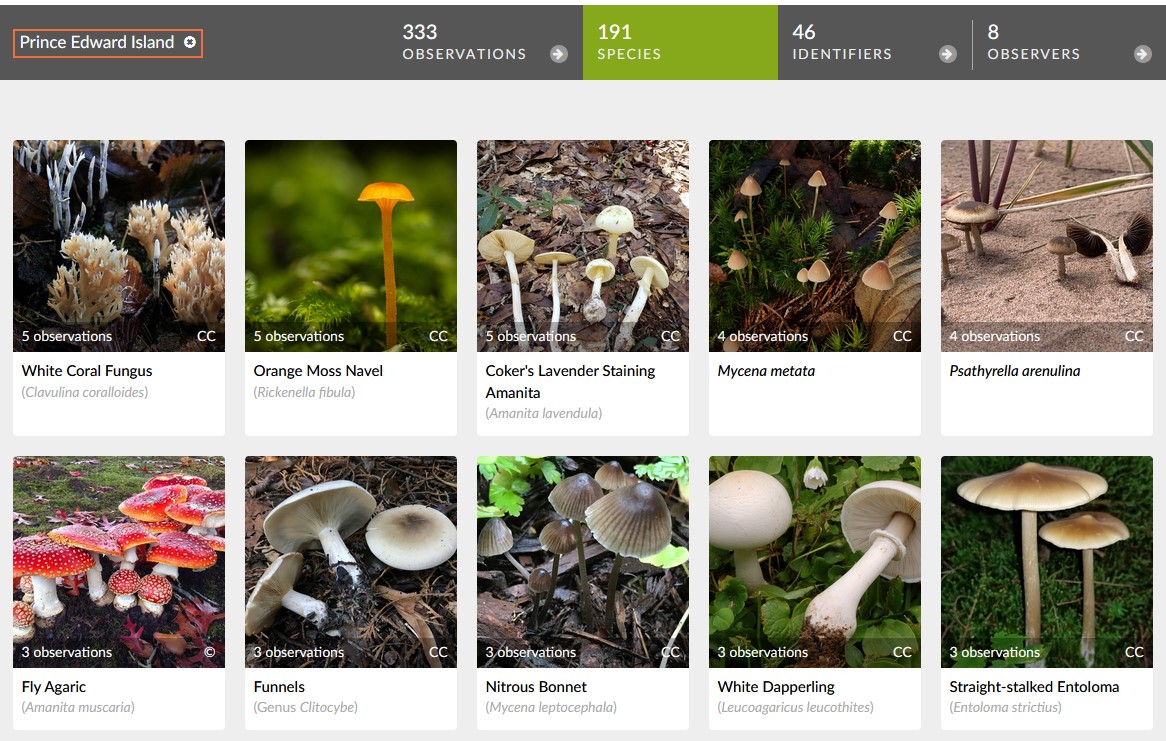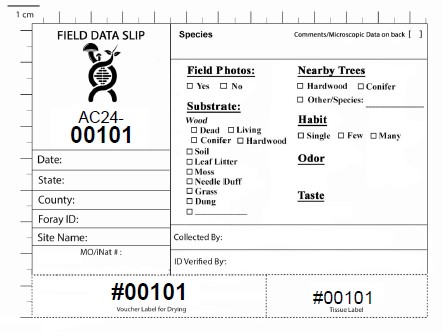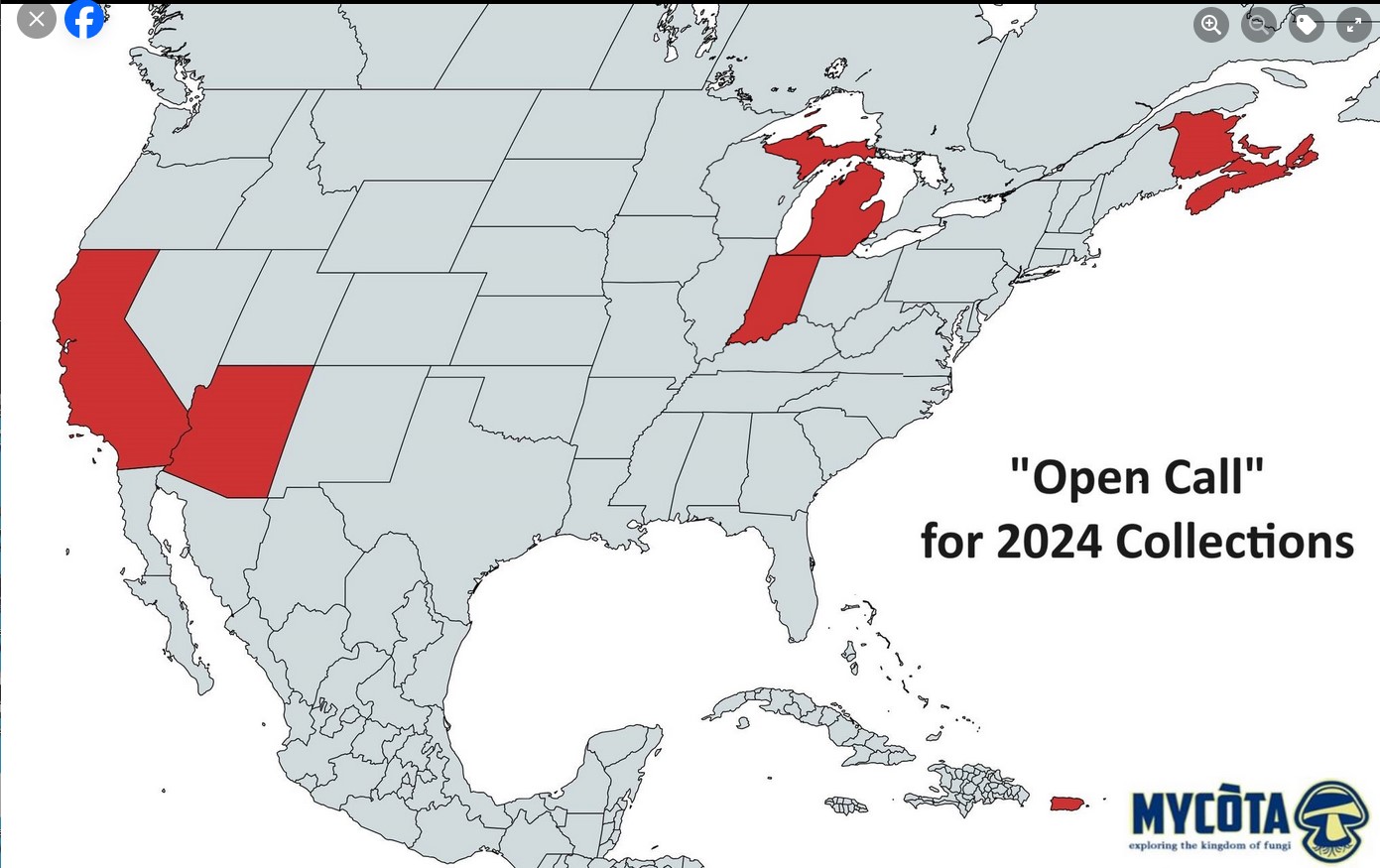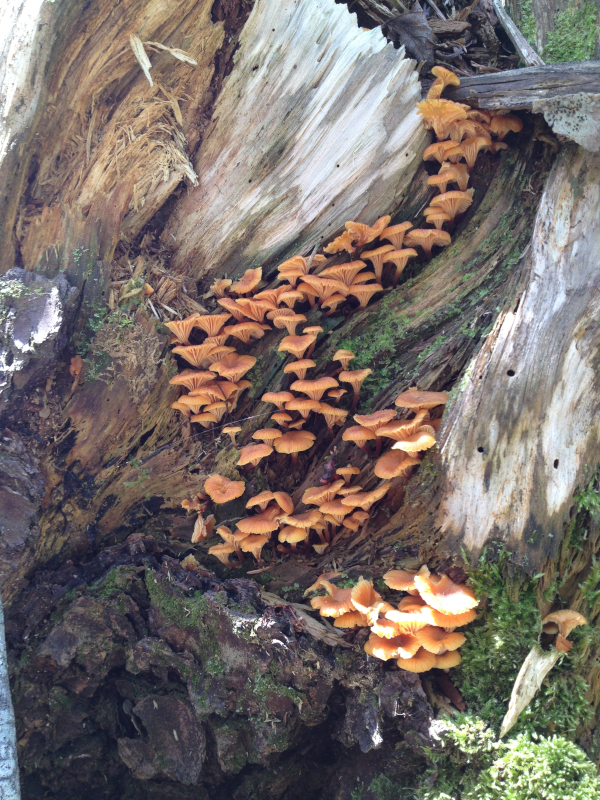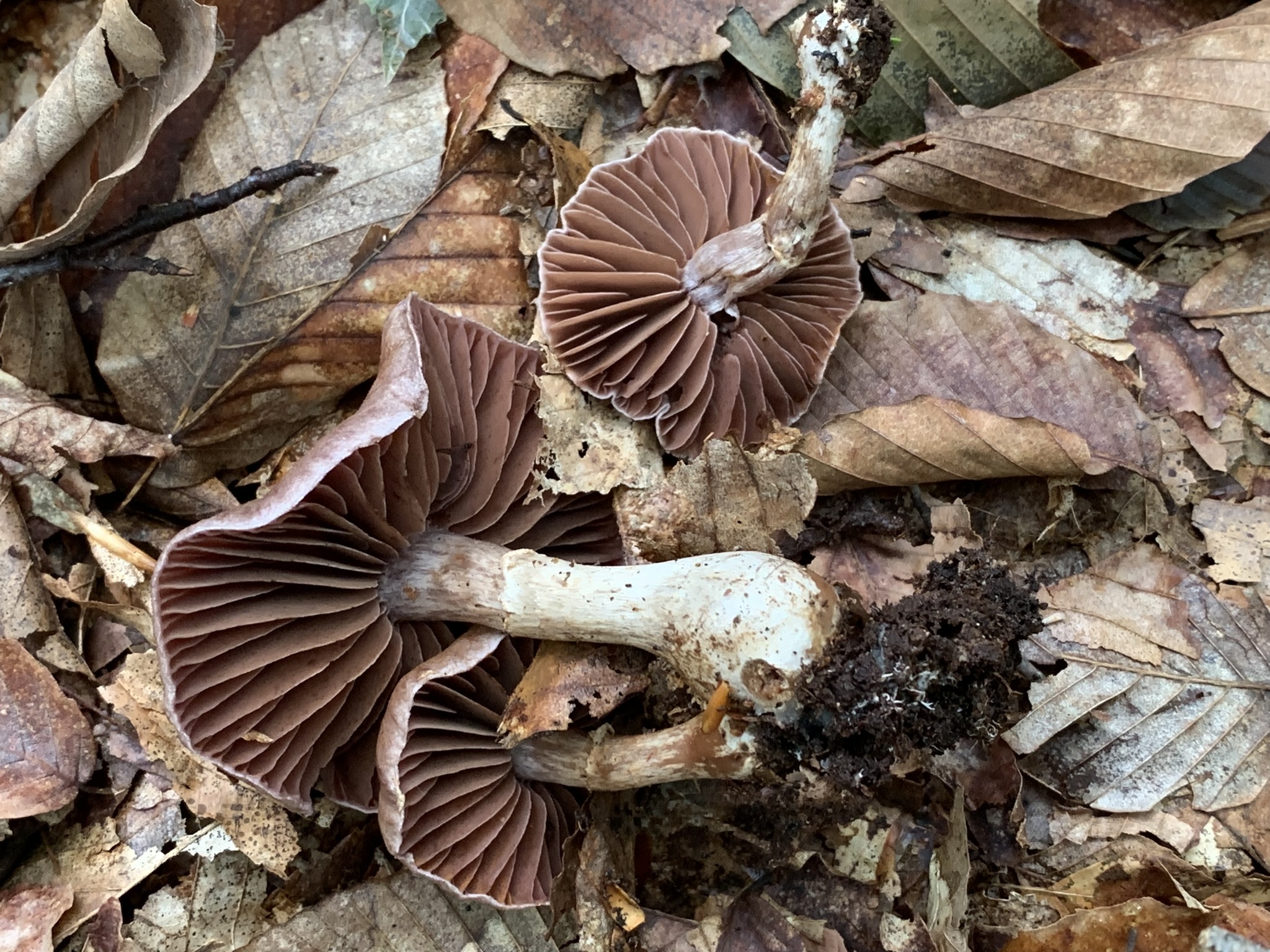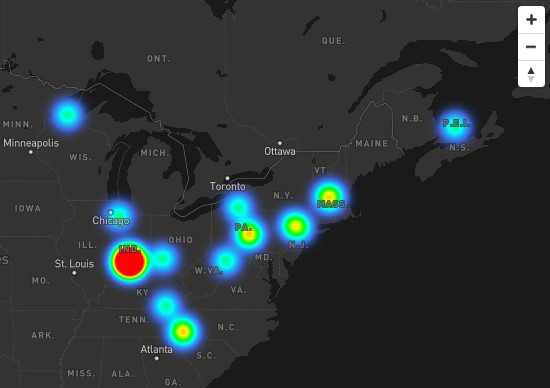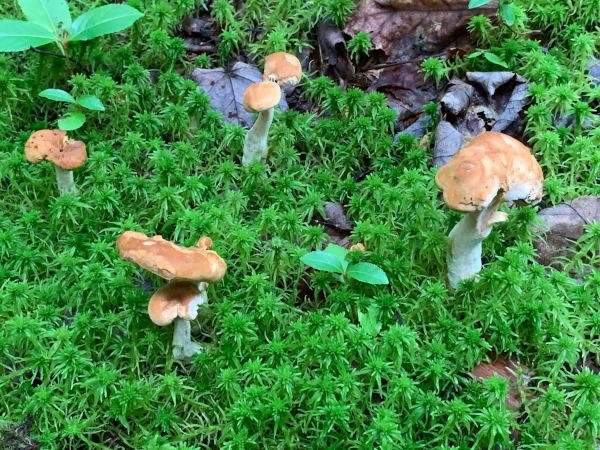
Among the 40 DNA sequences we analyzed this past week, a few stand out, one of which is Hydnum atlanticum. This species remained undescribed until our colleagues in New Brunswick, as part of their comprehensive Hydnum survey, gathered enough specimens to formally identify it. Their findings are documented in a recent publication, accessible here. Initially, Hydnum atlanticum was known to inhabit New Brunswick, Newfoundland and Labrador, and one observation in New York.
Our contributions during the Summer Mycoblitz of 2023 have expanded its known range. A specimen collected from Prince Edward Island (PEI) has been confirmed as Hydnum atlanticum through DNA sequencing, marking an exciting expansion of our understanding of this species' geographic distribution.
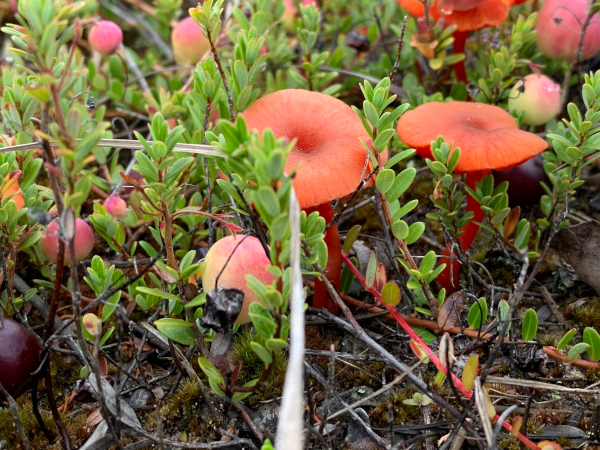
Another notable result, was the intriguing find of the Waisted Waxcap (Hygrocybe substrangulata), spotted in the unique environment of coastal sand dune slacks, cohabiting with Bog Cranberry (Vaccinium oxycoccus). Initially, after consulting with a Waxcap specialist, our sighting was suspected to be what was thought a sub-arctic species.
Further exploration in similar habitats along our coastal sand dunes yielded more specimens. DNA sequencing has since confirmed their identity, significantly expanding our knowledge of its presence and distribution.
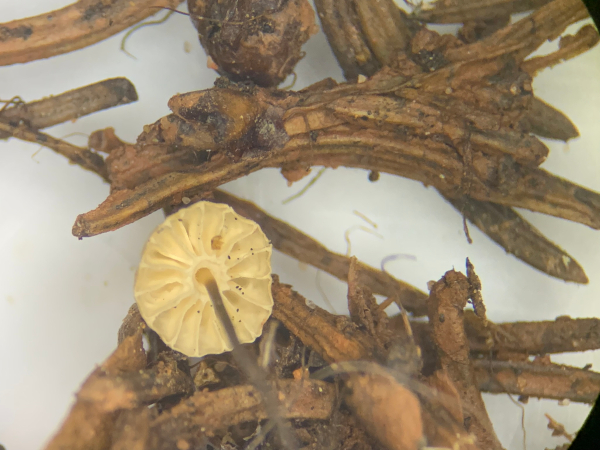
During last summer's survey, we encountered the Collared Parachute mushroom (Marasmius rotula) in two unusual locations. Typically found on hardwood debris, these mushrooms were instead growing on spruce needles, a substrate not commonly associated with them. This deviation sparked curiosity, as literature offers mixed views on the species' substrate preference, with some sources hinting at its adaptability to spruce, while others suggest a close relative, Marasmius wettsteinii, is the spruce-dwelling counterpart.
To resolve this ambiguity, we conducted DNA analysis, which confirmed our specimens as Marasmius wettsteinii. This finding not only adds a new dimension to our understanding of the species' ecological range but also marks the identification of two distinct habitats for Collared Parachutes on PEI, challenging previous assumptions about their substrate specificity.



